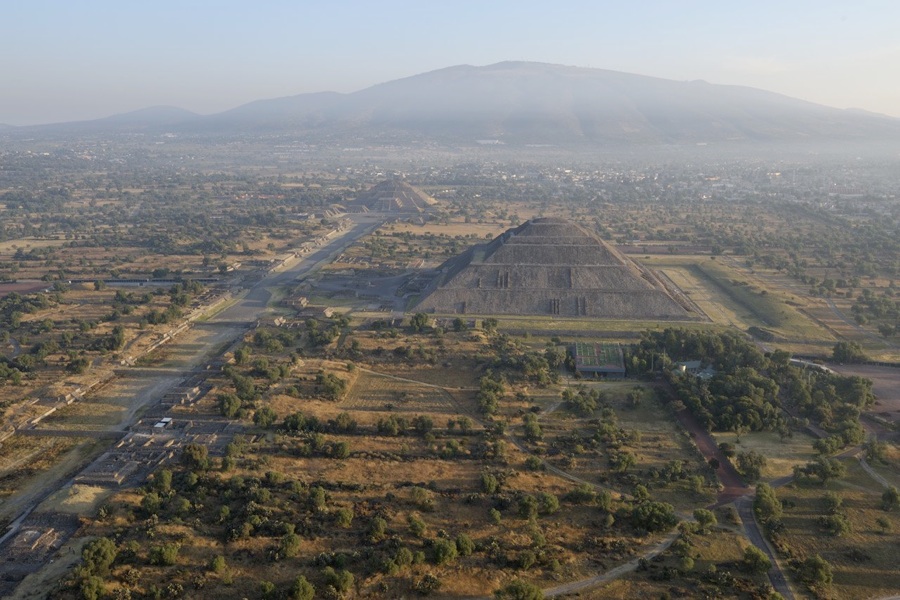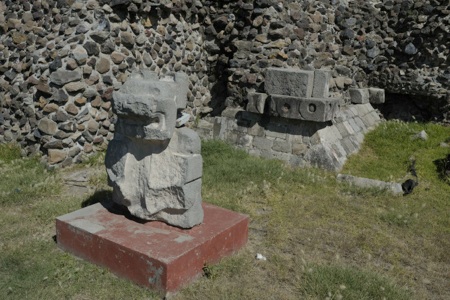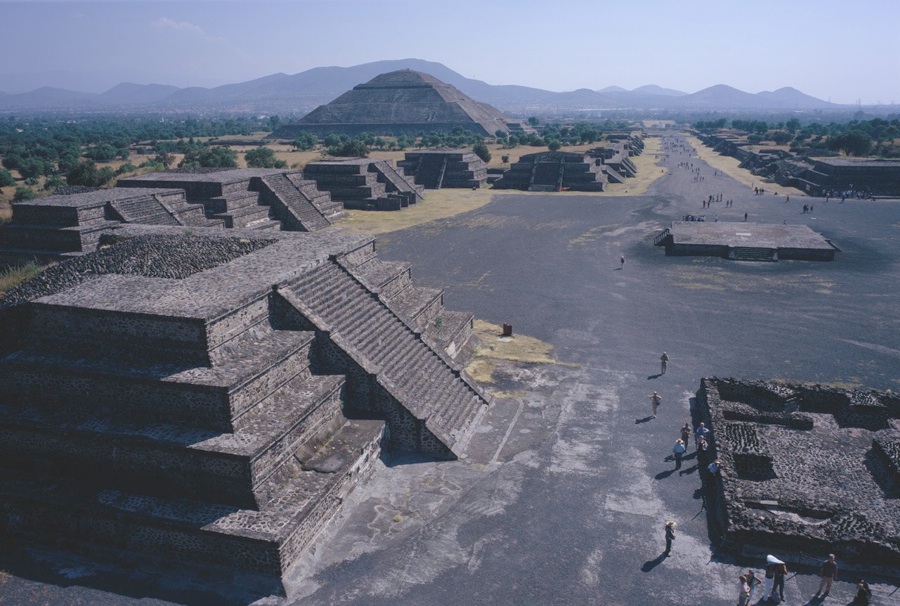After visiting smaller temples along the way of the Avenue of the Dead, we walked over and up the Pyramid of the Sun. This Pyramid is amazing and has the same base as the Great Pyramid in Egypt. This Pyramid is the highlight of Teotihuacan. The presence of children sacrifices at the Pyramid’s corners turned me off to the Pyramid. However, I did climb the Pyramid several times because the energy on top felt pretty good. The hike up this Pyramid is a good physical workout.
According to the INAH Sign accompanying this Pyramid, the Pyramid of the Sun is the largest Pre-Hispanic building of its times (circa 100-650 A.D.). The Pyramid gets its name from the fact that beginning in the 16th Century A.D., Spanish accounts claimed that the inhabitants worshipped the Sun God at this Pyramid. Archaeologists have discovered that the inhabitants built this Pyramid in a single operation and its interior is solid and formed from sand and dirt fills. The inhabitants began construction of this Pyramid during the Tzacualli Phase (1-100 A.D.). In the next/Miccaotli Phase (100-250 A.D.), the inhabitants built a platform in front of the Pyramid’s main facade and then parallel to it they built 2 temples on the Pyramid’s north and south sides. Archaeologists have found 3 overlying levels of construction on the Pyramid. The last and most recent is at the north, south, and east base sides of the Pyramid. The Pyramid rests upon a huge platform surrounded by a moat. The overall shape of the Pyramid belongs to its penultimate construction phase. The Pyramid originally had 4 terraces, not the current 5. A temple once sat on the Pyramid’s top where the inhabitants conducted religious rites associated with the Sun God.
According to the INAH Plaque accompanying this Pyramid, archaeologists now suspect that the Pyramid of the Sun was actually dedicated to the Water Deity Tlaloc. The 10 foot moat surrounding the Pyramid’s base and giving it the meaning of “Altepetl” (Water Hill), the presence of child burials [sacrifices] at the Pyramid’s corners (characteristic of the inhabitants’ offerings to the Water Deity), and a cave beneath the Pyramid all support this interpretation. The inhabitants ascribed 2 meanings to caves in their Cosmic vision of Life and Death: 1st, caves bore symbolic relation to Tlaloc (interpreted as life-giving wombs); and 2nd, caves represented entrances to the World of the Dead. The Pyramid is currently 213 feet tall and 746 feet on each side.





